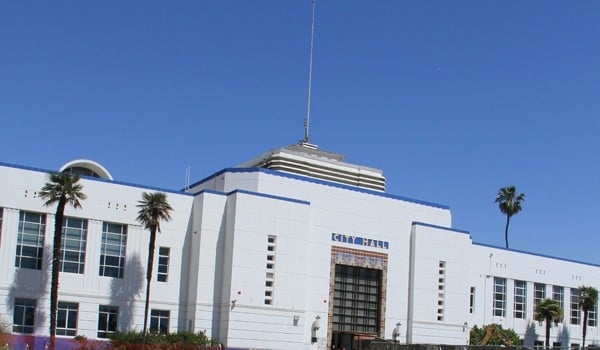Based on last night's City Council meeting, City Hall wants you to relax, have a leisurely meal and maybe enjoy a glass of wine with the entrée.
The council didn't specifically tell anyone to drink (although with the meeting lasting past midnight, many might have needed one) but it did increase the number of possible alcohol outlets downtown while also installing a temporary ban on converting full-service restaurants to “fast-causal.”
Both decisions came during an extension of temporary zoning rules governing the downtown area. Permanent rules are under discussion via the Downtown Community Plan, but City Hall extended the timeline for finishing that document which, in turn, required action to specifically allow the current rules to remain in place.
The rules require a development agreement for projects over 32 feet in height but allow less stringent reviews for less dense projects.
However, in a possibly first-of-its-kind meeting, the discussion completely bypassed talk of height and density. Instead, debate centered on the desire for more alcohol permits in the area.
Santa Monica has limited the number of alcohol permits in the so-called Bayside District (between 2nd and 4th streets from Wilshire Boulevard and Broadway) to 50 total. That limit was reached in October 2014 and new businesses that want to serve alcohol must wait for a permit to become available when another licensed business closes.
Staff said they'd like to explore increasing the number of alcohol permits, but only for restaurants. They said alcohol permits are a requirement for most restaurants and without the ability to provide a permit, efforts to attract new restaurants will be undermined.
According to the National Restaurant Association, the sale of alcoholic beverages is part of a nationwide trend with more operators adding alcohol to meet the demands of customers. In their nationwide survey, the association found that between 62 and 98 percent of customers expect restaurants to provide new alcoholic options each year, depending on the kind of restaurant.
Staff said the permits were being consumed locally by businesses that didn't traditionally have alcohol sales, such as the newly renovated Laemmle movie theater that has a licenses for theater and two more for a pair of on-site restaurants.
Scott Schonfeld, who owns the recently rebuilt food court on Third Street Promenade, said his permit will lapse due to the year-long remodel. Without council action to raise the permit cap, his tenants would be unable to serve alcohol and that limiting alcohol sales undercuts a restaurant's ability to turn a profit.
He said given an increasingly difficult business model that includes higher costs due to the new minimum wage, limited alcohol sales will hurt the city's ability to attract local operators. Instead, he said restaurants would either continue to disappear in favor of retail or the operators will increasingly be corporations with better profit margins.
“We want to keep and attract quality restaurants at affordable price points for downtown residents, employees and visitors,” he said, “but we won't be able to do that if we make it harder for restaurants to generate revenues as their expenses increase.”
His company also owns the building at 1640 5th St., where the Daily Press rents office space.
Staff had asked the limit be suspended pending adoption of the Downtown Community Plan, but several councilmembers and some public speakers objected to abandoning the limit entirely.
Councilman Kevin McKeown was the first to suggest a numeric increase over an outright repeal of the ban. He initially suggested raising the cap by five permits and rejected a counter proposal to raise it by 15 saying he has received complaints from nearby neighbors about drunken behavior.
“I think we owe it to the residents of our city to be just a little bit cautious here,” he said.
McKeown eventually proposed an increase of 10 permits, raising the cap to 60 total, for the interim period. Staff said the compromise would provide them with enough flexibility to handle the expected applications until a new policy was set in the Downtown Community Plan.
Council also approved a temporary ban on converting full-service restaurants to fast-casual concepts on the promenade.
Staff said there was an economic incentive to providing a diversity of restaurant types on the street and said a temporary ban would provide time to study the issue.
The area currently has 18 restaurants and three vacant restaurant spaces. Of the occupied eateries, only eight are full-service.
The temporary zoning rules utilize a 1988 zoning standard that prohibits fast-food restaurants outside the food court area, but the “fast-casual” stores skirt the fast-food designation by providing amenities such as table service or non-disposable tableware.
Nationwide, quick-service and fast-casual restaurant growth is outpacing that of full-service restaurants. According to the National Restaurant Association, sales at full-service restaurants increased by 4.9 percent over the last year, while sales at quick-service/fast-casual eateries rose by 5.9 percent.
Examples of fast-casual restaurants downtown include Tender Greens, Burger Lounge, 800 Degrees and Chipotle, but the ban applies only to the Promenade.









